Another week has passed - we are sharing the results of work on our rocket.

Who is with us for the first time, in order to understand what is happening, I advise you to familiarize yourself with the history of previous releases. I ask guests under the cat.
Gluing checkers
In previous issues, we welded fuel and shaped them into checkers with a channel inside. This technique was chosen for reasons of ease of manufacture, since casting the whole block and pressing the fuel is quite problematic given the equipment we have, and it is not a fact that it will turn out well. Therefore, it was decided to cast small checkers, and then glue them together.
All the same fuel will be used as the glue in order to achieve uniformity. To do this, cooked a small fresh portion, processed the ends of the checkers, coated them with fuel and combined, observing the alignment. When processing checkers, remember that fuel is very fragile and can crumble when processing, for example, with a knife, so it is best to do this with sandpaper. Once again, I remind you ofsafety measures when working with fuel: avoid sources of open flames and powerful heaters near fuel, as well as general caution.
The result is a large long checker, consisting of five smaller ones - just what you need to install in the engine housing.

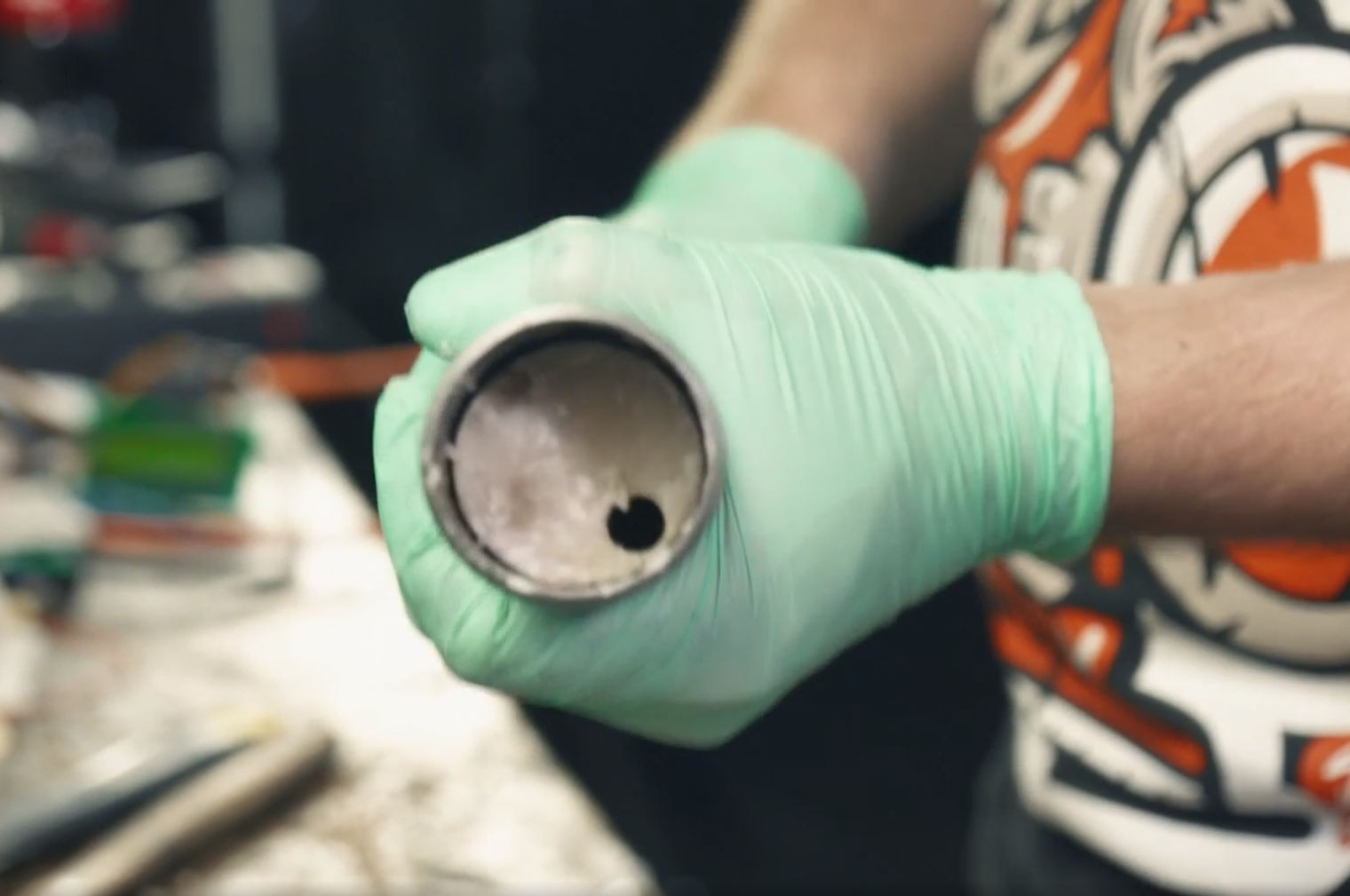
Assembling the engine
Since the idea with a threaded plug failed due to the impossibility of cutting it on the pipe, we decided not to bother and just weld the non-working end.

On the opposite end of the pipe-body, the nozzle is hardly put on, so we will sit "on hot". The fixation will be carried out with three M5 screws set at 120 degrees.
But first you need to drill a nozzle to fit the screws. Conventional drills that were in stock flatly refused to drill stainless steel, a raid to the nearest tool store replenished the arsenal with cobalt drills, but an inept hand immediately broke two of them under a diameter of 3 mm. We call Uncle Kirill and ask how to drill this steel. The tips were something like this:
- cobalt drills - done
- low revs
- high feed force
- Coolant
It was proposed to use oleic acid in any form as a coolant. We only had sunflower seeds available at hand. When drilling, it is important not to reduce the pressure on the material and not to increase the rotational speed of the drill, since the stainless steel is riveted at the contact point and sharply increases its hardness, as a result of which it is almost impossible to drill it with the same drill. With all these tips in mind, the holes were drilled without any problems using a hand-held screwdriver in two passes: first with a 3 mm drill, then with a 5.2 mm drill.

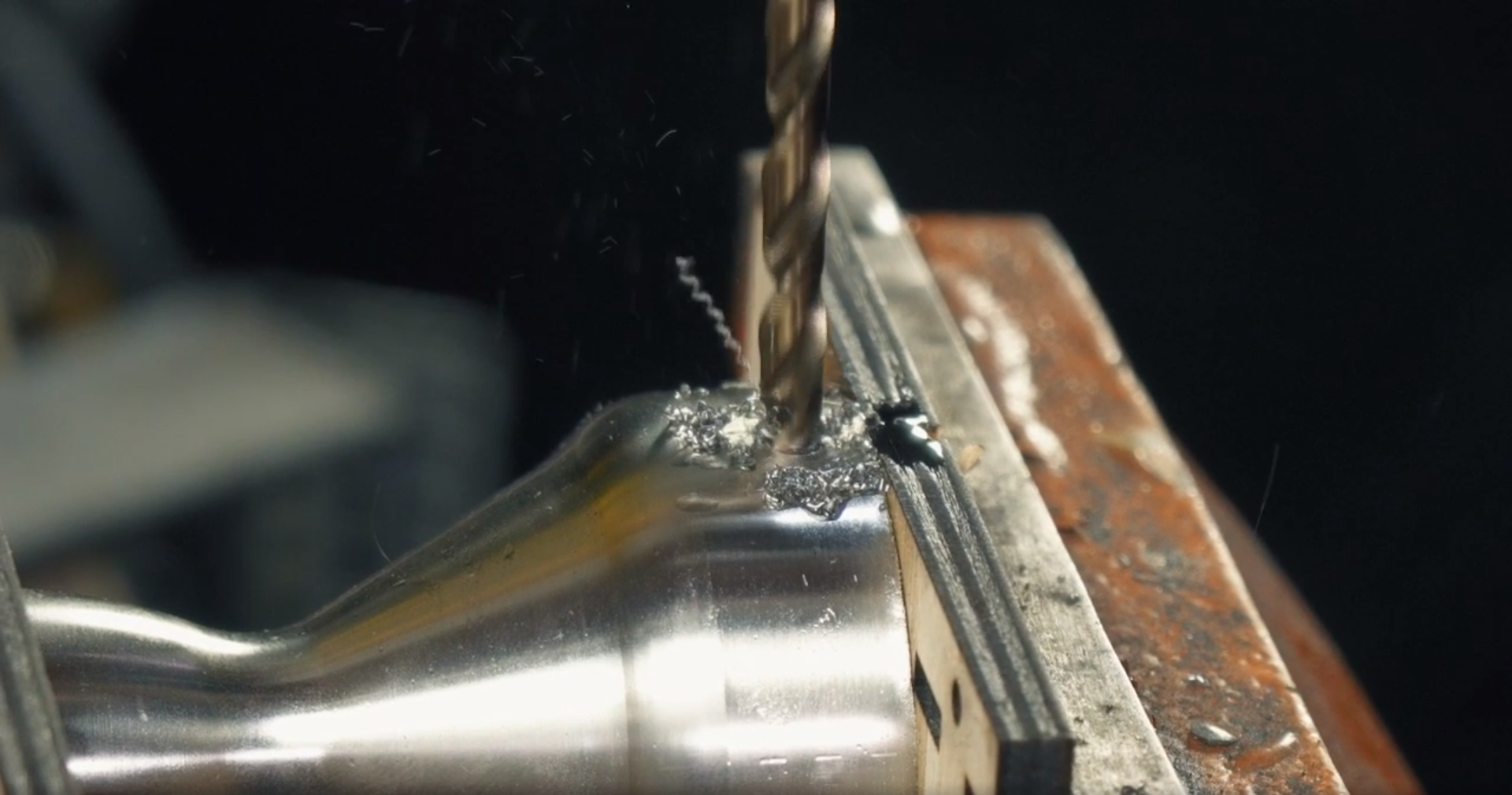
In the pipe, it, already just steel (St30, it seems), was drilled without any problems, threads were cut in the holes.
Ablation
Before installing a fuel charge into the engine, you need to think about an ablator. In short, this is a layer of material that protects the body from the effects of heating by its own melting and sublimation, which is where heat energy is spent. A kind of sacrificial layer. In our case, ablation should be applied inside the engine body, in the space between the wall and the fuel. When making checkers, a tolerance was given for this layer.
We decided to use epoxy resin as an ablator, which we had in abundance. The problem of uniform distribution of epoxy over the inner surface of the pipe was solved by rotation using a motor from a screwdriver and a simple stand.

After the epoxy spreads, we insert a ready-made fuel charge into the body and install an electric igniter, the wires from which we pass through a nozzle, which, in turn, we heat, and we sit on the pipe, having previously sealed the landing site with a heat-resistant sealant. We tighten the fixing screws and our test motor is ready!
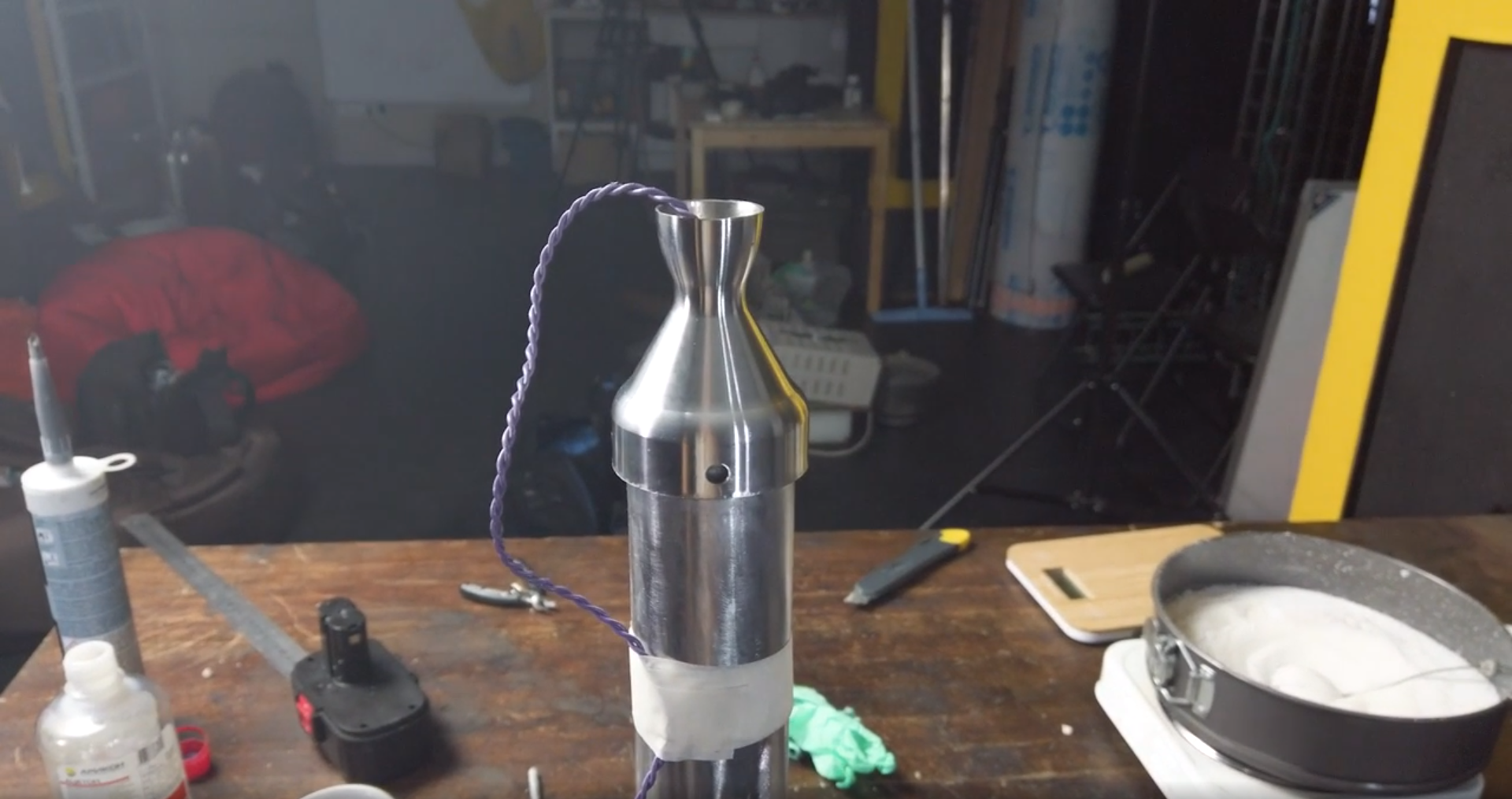
Fire tests
Rocket engine tests are an extremely dangerous undertaking, so the place of their conduct and preparation should be taken as seriously as possible. For our tests, we chose the abandoned ghost town of Adularia - a former military town No. 310 VCh 51850 kilometers 80 from Moscow. One of the factors that influenced this choice was the fact that the military unit served the S-51 "Berkut" air defense system, which was significant for us - amateur rocket designers.
The day before the test, I went to Adularia for reconnaissance. The city really turned out to be abandoned and uninhabited for a long time, but the territory was chosen by various types of filmmakers (by the way, at the time of exploration, a film crew of some music video was on the spot), as well as airsoft players (as evidenced by a large number of balls for drives) and firearms lovers ( shells from rifles, pistols and hunting rifles lay everywhere). The main attraction is two five-story buildings facing each other.

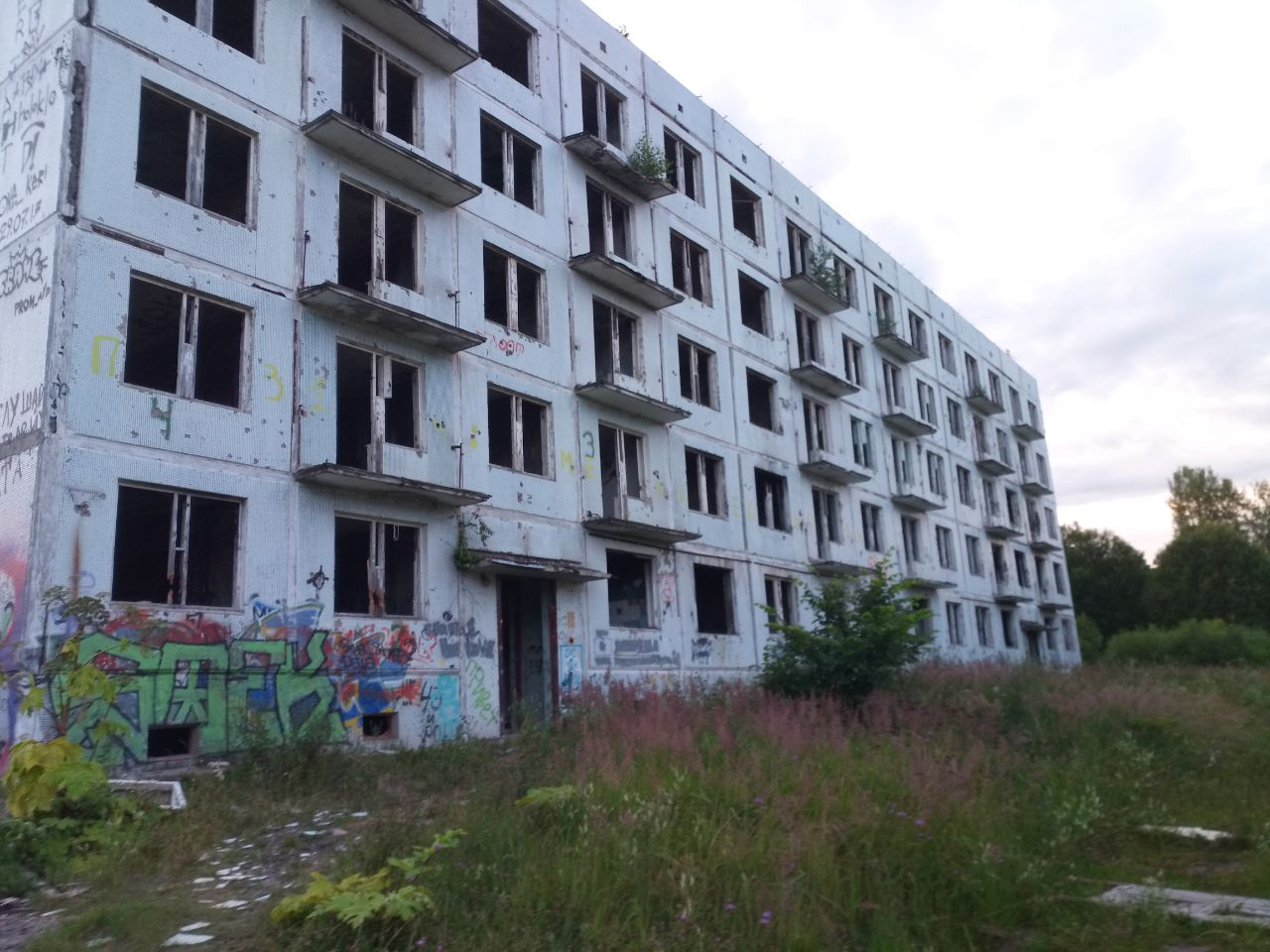

The next day we set out for trials in full force. Upon arrival at the site, they chose a site for testing, where it was possible to install cameras and at the same time hide behind shelters. Safety is first of all in such matters. We set up a stand and fixed it by driving it into the ground with pins, carried out an inspection, during which we made sure that everything was working as usual and was not damaged during transportation.
Then we fixed the engine on the carriage of the stand, once again made sure that there were no people in the danger zone, took places in the shelter and ignited.
Everything happened so quickly that we didn't even have time to be surprised or frightened. A few milliseconds after the start of the fuse, a whistle was heard, which was abruptly interrupted by a strong pop.
Coming out of hiding, they found that the engine had no nozzle, and the remains of smoke were coming out of the hull. After looking at the record, we saw that the engine spat out the starter regularly, after which it went into operation, however, after that, the base of the nozzle put on the pipe-body began to expand, tore off the screws and went flying in the direction of gas movement.
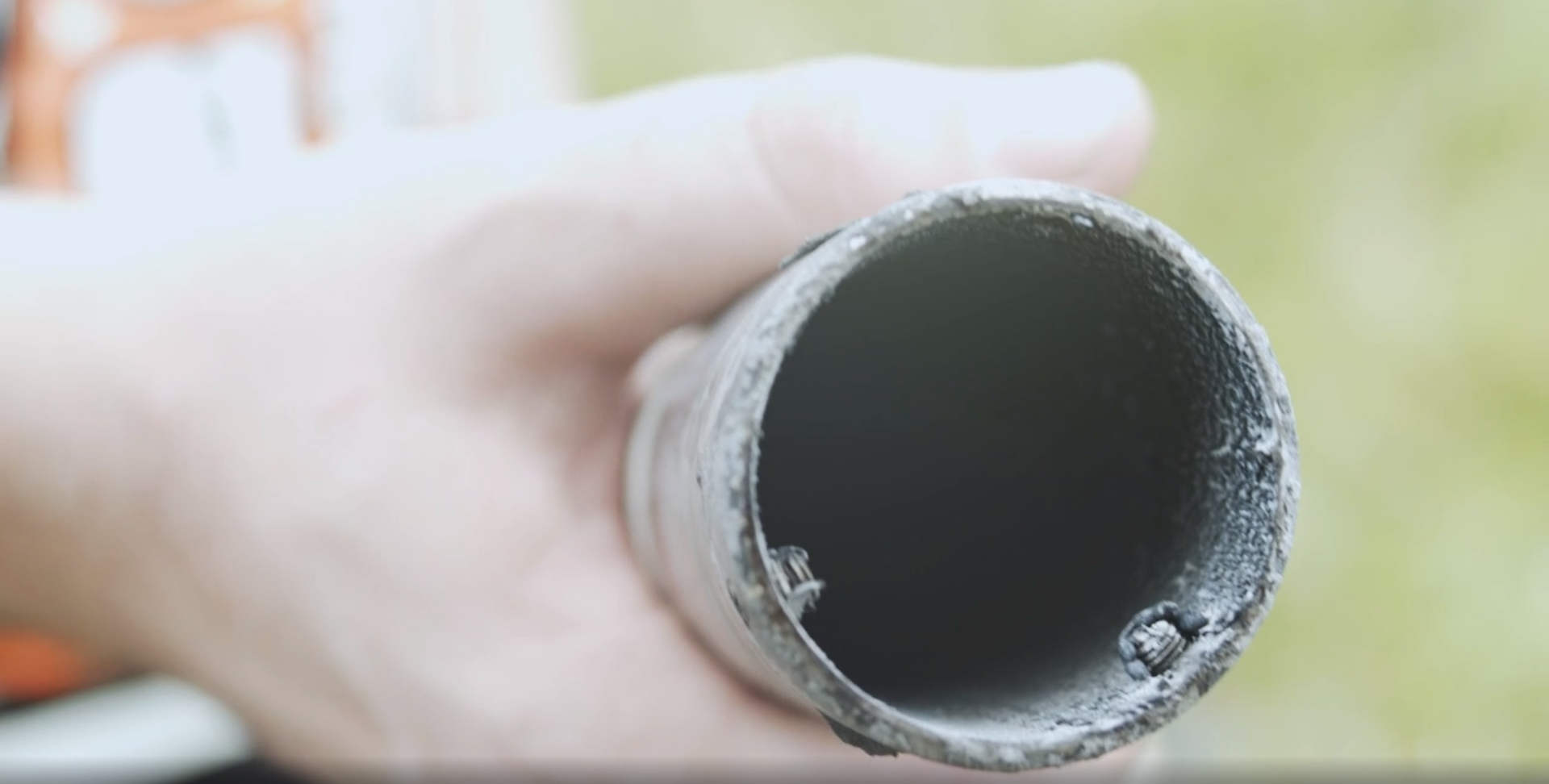
The measuring stand showed an extremely rapid increase in thrust force up to 135 kg, provided that the sensors were designed for 100 kg (2 x 50 kg). It is impossible to say for sure that this value was the maximum, however, unequivocally, not less than the indicated one. In addition, due to the shock load that arose, the carriage broke one of the hardened guides with a diameter of 10 mm, and the rocker arm was deformed, distributing the load between the two strain gauges. The latter also suffered, as they turned out to be significantly curved and no longer responded to pressure.
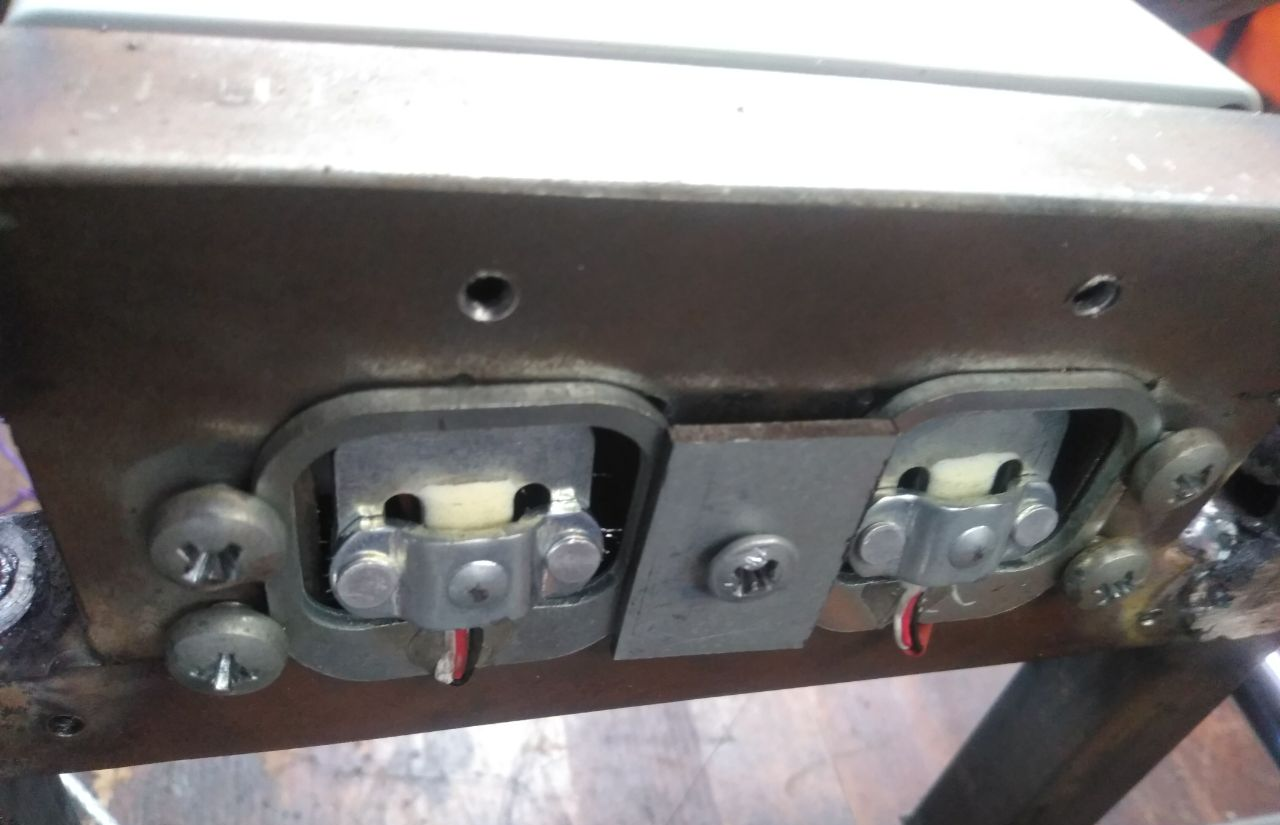


Bottom line: the stand is crippled, the sensors are broken, we never found the nozzle in the tall grass. We will return to the studio, tired, wet with rain and frustrated, and in the next issue we will find the reasons for this behavior of the engine and how to deal with them.
A video on the article can be viewed here: